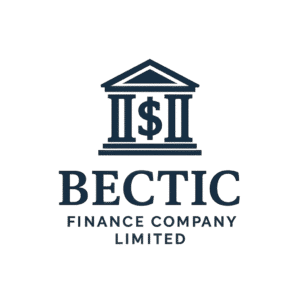Banking Instruments: A Complete Guide.

In global finance and trade, Banking Instruments are essential tools that facilitate secure transactions, build trust between parties, and reduce financial risk. Whether you are an importer, exporter, investor, or business owner, understanding the meaning, uses, and types of banking instruments can help you succeed in today’s competitive marketplace.
What Are Banking Instruments?
Banking instruments are financial tools issued by banks or financial institutions to support commercial transactions, trade finance, and investments. They act as proof of payment, security, or guarantee between two parties engaging in business.
In simple terms, banking instruments are documents or contracts that reduce risk in financial dealings, ensuring that both the buyer and seller fulfill their obligations.
Uses of Banking Instruments
Banking instruments are widely used in:
-International Trade – To secure payment between exporters and importers.
-Business Financing – To provide businesses with access to credit and working capital.
-Risk Mitigation – To protect companies from non-payment or contract failure.
-Guarantees – To assure one party that obligations will be met.
-Investment – To enable raising capital and securing funds.
Types of Banking Instruments
1. Funded Instruments
These involve direct monetary value or financing provided by the bank.
* Loans and Advances – Money lent by banks for business or personal use.
2. Non-Funded Instruments
These are guarantees or assurances without immediate monetary transfer, but they create financial liability if triggered.
* Letter of Credit (LC): Guarantees payment in international trade once conditions are met.
* Standby Letter of Credit (SBLC): A backup guarantee in case of non-performance.
* Bank Guarantee (BG): Assures payment or performance to a beneficiary.
* Performance Bonds: Used in construction and projects to guarantee completion.
* Popular Banking Instruments Explained
Letter of Credit (LC)
A written commitment by a bank guaranteeing payment to a seller if contractual obligations are fulfilled.
Example: An Indian exporter shipping textiles to Europe gets paid once documents are presented through an LC.
Standby Letter of Credit (SBLC)
A safety net that ensures the beneficiary gets paid if the applicant defaults.
Example: A contractor failing to complete a project allows the client to claim funds via SBLC.
Bank Guarantee (BG)
A promise by the bank to cover losses if the applicant fails to perform or pay.
Example: A supplier delivering raw materials relies on a BG from the buyer’s bank.
Demand Draft (DD)
A prepaid negotiable instrument issued by a bank to ensure guaranteed funds.
Example: Students paying university fees abroad via demand draft.
Real-World Case Studies
Case Study 1: International Trade Deal
A Ghana-based cocoa exporter secured a Letter of Credit from a European buyer. The LC ensured the exporter received payment once shipping documents were submitted, reducing risk for both parties.
Case Study 2: Construction Project
A multinational engineering company in Dubai issued a Performance SBLC to guarantee completion of a bridge. When delays occurred, the client recovered damages through the SBLC.
Case Study 3: Business Loan Security
A medium-sized manufacturing company obtained a Bank Guarantee to secure a $5M loan. The BG reassured the lender of repayment, allowing the company to expand production.
Benefits of Banking Instruments
1.Trust and Security in global trade.
2. Access to Financing for business growth.
3. Risk Reduction for both buyers and sellers.
4. Global Acceptance across industries.
5. Flexibility in structuring contracts and agreements.
Common Misconceptions About Banking Instruments
Banking instruments are only for large corporations. → False. SMEs also use them for trade finance.
They are the same as loans. → False. Some instruments (like BGs or SBLCs) are only guarantees, not loans.
They are only used in international trade. → False. Banking instruments are used domestically too.
FAQs on Banking Instruments
1. What is the difference between LC and SBLC?
An LC is a direct payment method, while an SBLC is a guarantee used only if the buyer defaults.
2. Can banking instruments be monetized?
Yes, in some cases, instruments like SBLCs and BGs can be monetized to raise capital, subject to banking regulations.
3. Are banking instruments safe?
Yes, when issued by reputable banks, they provide high levels of security in trade and finance.
4. Who uses banking instruments most?
Conclusion
Banking instruments are the backbone of global trade and finance. From Letters of Credit to Bank Guarantees and Standby LCs, they provide trust, security, and opportunities for businesses worldwide. Whether you are a small enterprise or a multinational corporation, using the right banking instrument can protect your business and fuel growth.
If you’re looking to expand internationally, ensure your contracts are backed by strong banking instruments for safety and success.
For more information, please contact us:
BECTIC FINANCE COMPANY LIMITED
Website : becticfinance.com
Email : info@becticfinance.com
Phone number : +85281924518
We deliver with time and precision as set forth in the agreement. Our terms and Conditions are reasonable and we work directly with issuing bank lease providers, this instrument can be monetized on your behalf for 100% funding. Intermediaries/Consultants/Brokers are welcome to bring their clients and are 100% protected. In complete confidence, we will work together for the benefits of all parties involved.
#Bankinstrumentproviders, #Bankguarantee(B/G)providers, #StandbyLetterofCreditprovider, #Moneylenders, #Projectfunding, #Projectfinancing, #Sblcproviders, #Leasebgsblc, #Leasesblc, #Leasebankinstruments, #Businessloans, #Businessloanlender, #Smeloans, #Nonrecourseloans, #becticfinancecompanylimited, BankInstrumentsProviders, BankGuarantee(BG)Providers, StandbyLetterofCredit(SBLC)Provider’s, BankInstrument(BG/SBLC)Monetizers.

Recent Comments